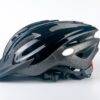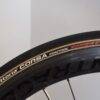Category: Bike Gear
The Best Bike Lanes in the World: 12 Cities Doing it Right
Cycling in urban environments can be one of life’s greatest joys. Feeling the wind in your hair, seeing a city in a beautiful new way, and exploring the nooks and crannies beyond well-trodden paths are all things that city cyclists love about travelling on two wheels. In this piece, we’ll explore some of the best cities in the world for cyclists – from infrastructure to environment to culture, these are the best spots across the globe to take your bike on an urban adventure. What Makes a “Bike-Friendly City”? When we’re deciding what makes a ‘bike friendly city’, we’re looking for the following things: Great cycling infrastructure, including protected lanes Deprioritisation of cars in favour of bicycles Popularity of cycling…
Bicycle Industry Statistics 2023: 50 Sales and Market Stats
Cycling, especially in its sporting form, is inherently related to numbers. Every man and his dog loves to quantify their bike, their bike ride even their next accessory purchase. Total bike weight, average speed or the waterproof rating of a waterproof jacket – the industry is littered with ratings and figures. Furthermore, as cycling grows in popularity, particularly as a clean, green and healthy means of transport, so does the appetite for cycling and bicycle data. The rise of electric bikes has only served to add fuel to this fire. For stat lovers, policymakers, cycling fans and those who work in the industry, our list of the top bike industry statistics in 2023 compiles a wide variety of figures that…
Bike Helmet Statistics: 51 Stats on Usage and Safety
While riding your bike it’s a good idea to protect yourself by using a helmet. Your head is obviously a very important part of your body to protect, to prevent brain injuries and death from occurring upon impact. As more people globally turn to bikes, in some countries (as well as cities), such as Australia, it’s a legal requirement to wear a helmet while riding a bike. Not only that, but the helmets have to be approved by the government and fastened up properly. Elsewhere, helmets should be marked with the safety standard EN 1078 for adults or EN 1080 for children, to show they’ve passed safety regulations. But are helmets really needed? In many countries such as the Netherlands…
Bike Commuting Statistics: 74 Cycling to Work Stats [2023]
Cycling to work has become an increasingly popular form of transportation, with more people opting for a healthy and environmentally friendly mode of travel. With the rise of bike commuting, it’s important to understand the impact it has on cities and communities. This post presents 75 key statistics on bike commuting, providing insights on the number of people cycling to work, the benefits of cycling, and the challenges faced by cyclists. From the average distance cycled by commuters to the reasons why people choose to cycle, these stats paint a picture of the current state of bike commuting and its future potential. Let’s dive in. Bike Commuting Statistics There are around 1 billion bikes in the world. (Statista) In some…
Honbike Uni4 Review: Long-Range Belt-Driven E-Bike Tested
I’ve got a confession: I’ve fallen in love with e-bikes over the past 18 months. It’s like cycling within an endless tailwind. I understand some people enjoy the grind of cycling. The ups and downs. The hard and the easy. But when I’m cycling to my office, I enjoy not arriving in a sweaty mess. I enjoy not having to worry about how hot the weather is. Or if I’ll be pedalling into a strong wind. I enjoy the unadulterated leisure. With that in mind, I’ve been testing out various urban e-bikes in the pursuit of finding the perfect electric bike for commuters. And when I discovered the Honbike Uni4 I got very excited. IMAGE CREDIT: HONBIKE The Honbike is…
Electric Bike Statistics: 68 Incredible Stats About E-Bikes
There’s no denying that electric bikes are very exciting. They give cyclists a way to go further and faster without having to work harder, resulting in a more enjoyable ride that doesn’t leave you drenched in sweat. However, people still have a lot of questions about electric bikes, which is understandable seeing as their popularity is still relatively new. There are many cyclists who are intrigued by the concept of an e-bike, but are wary of shelling out a lot of money for something that might just be a gimmick, or that they feel they might not use as much as a regular bike. Here, we’ve created a one-stop-shop of electric bike statistics and facts to help you understand e-bikes…
Bike Tires That Don’t Puncture [3 Puncture-Proof Tires]
A saucepan, a garden spade or a backpack. Three utilitarian items that, when well designed, perform their job without even so much as a modicum of fuss. So well in fact that you may never notice their intricacies or foibles. Bike tires (or tyres) can and will fit into this narrative, barring one chin-scratching, angst-inducing event – a puncture. Punctures can, at best, ruin a glorious sunny ride or make you late for work. At worst, a punctured bike tire can quickly render a bike dangerous to ride. For most cyclists, including us here at Discerning Cyclist, a riding life is never truly puncture-free. But, with a little bit of care and attention, some steps can be taken to reduce…
Bicycle Tire Pressure: Beginner’s Easy Guide
Commuting by bike is made more comfortable by riding with the optimal tire pressure. Beginners will need to know where on the tire to find the manufacturer’s recommended amount of inflation. From there, they can work towards finding a sweet spot which could change based on different surfaces and riding conditions. What Pressure Should My Bike Tires Be? Bicycle tire pressure is measured in PSI (pounds per square inch) or in bar (from the ancient Greek word for weight). Bike tire pressure should be within a measured range noted on the side of each tire. Manufacturers set this to prolong tire life and acknowledge different rider characteristics. It’s not unreasonable to start with a tire pressure in the mid-range of…



![Bike Commuting Statistics: 74 Cycling to Work Stats [2023]](https://bicycle.org/wp-content/uploads/2023/02/3-2-1024x684-1-100x100.jpg)


![Bike Tires That Don’t Puncture [3 Puncture-Proof Tires]](https://bicycle.org/wp-content/uploads/2023/01/schwalbe-puncture-proof-tire-1024x684-1-100x100.jpg)
